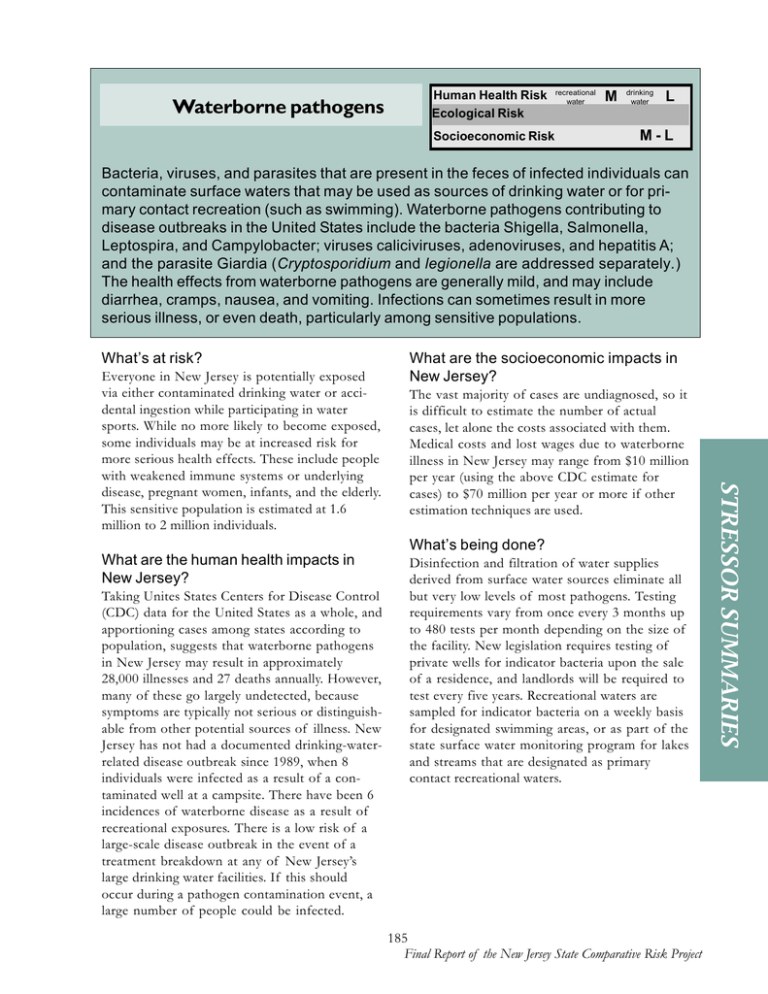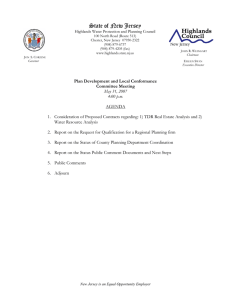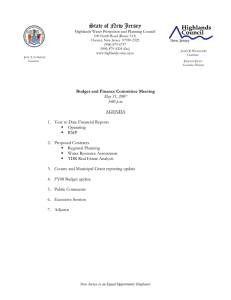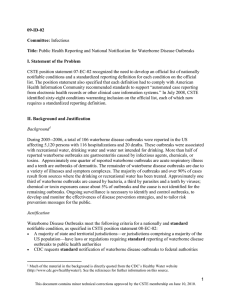Waterborne pathogens
advertisement

Waterborne pathogens Human Health Risk Ecological Risk Socioeconomic Risk recreational water M drinking water L M-L Bacteria, viruses, and parasites that are present in the feces of infected individuals can contaminate surface waters that may be used as sources of drinking water or for primary contact recreation (such as swimming). Waterborne pathogens contributing to disease outbreaks in the United States include the bacteria Shigella, Salmonella, Leptospira, and Campylobacter; viruses caliciviruses, adenoviruses, and hepatitis A; and the parasite Giardia (Cryptosporidium and legionella are addressed separately.) The health effects from waterborne pathogens are generally mild, and may include diarrhea, cramps, nausea, and vomiting. Infections can sometimes result in more serious illness, or even death, particularly among sensitive populations. What’s at risk? What are the human health impacts in New Jersey? Taking Unites States Centers for Disease Control (CDC) data for the United States as a whole, and apportioning cases among states according to population, suggests that waterborne pathogens in New Jersey may result in approximately 28,000 illnesses and 27 deaths annually. However, many of these go largely undetected, because symptoms are typically not serious or distinguishable from other potential sources of illness. New Jersey has not had a documented drinking-waterrelated disease outbreak since 1989, when 8 individuals were infected as a result of a contaminated well at a campsite. There have been 6 incidences of waterborne disease as a result of recreational exposures. There is a low risk of a large-scale disease outbreak in the event of a treatment breakdown at any of New Jersey’s large drinking water facilities. If this should occur during a pathogen contamination event, a large number of people could be infected. What are the socioeconomic impacts in New Jersey? The vast majority of cases are undiagnosed, so it is difficult to estimate the number of actual cases, let alone the costs associated with them. Medical costs and lost wages due to waterborne illness in New Jersey may range from $10 million per year (using the above CDC estimate for cases) to $70 million per year or more if other estimation techniques are used. What’s being done? Disinfection and filtration of water supplies derived from surface water sources eliminate all but very low levels of most pathogens. Testing requirements vary from once every 3 months up to 480 tests per month depending on the size of the facility. New legislation requires testing of private wells for indicator bacteria upon the sale of a residence, and landlords will be required to test every five years. Recreational waters are sampled for indicator bacteria on a weekly basis for designated swimming areas, or as part of the state surface water monitoring program for lakes and streams that are designated as primary contact recreational waters. 185 Final Report of the New Jersey State Comparative Risk Project STRESSOR SUMMARIES Everyone in New Jersey is potentially exposed via either contaminated drinking water or accidental ingestion while participating in water sports. While no more likely to become exposed, some individuals may be at increased risk for more serious health effects. These include people with weakened immune systems or underlying disease, pregnant women, infants, and the elderly. This sensitive population is estimated at 1.6 million to 2 million individuals.


